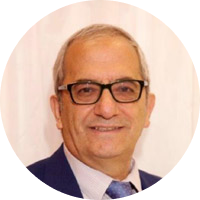
Lårløft
Noen utvikler hud/fettfordeling på innsiden av lårene som kan oppleves som ubehagelig og kan oppstå ifb med vekttap. Har man like mye fett- og hudoverskudd eller mer fettoverskudd enn hud, kan figurforming (fettsuging) være nok, gitt at man har god hudkvalitet. Har man betydelig hudoverskudd, må man gjennomføre lårløft der man i tillegg til figurforming også fjerner overflødig hud. Dette etterlater et arr på i lysken foran og bak som varierer i lengden avhengig av graden på hudoverskuddet. Etter 12-18 måneder vil de fleste arr være bleket.
Vi anbefaler kompresjonsplagg i 4-6 uker etter operasjonen. De fleste kan returnere til jobb etter 4 uker og trene lett etter 6 uker.
Henting og overnatting
Du må på forhånd avtale med en person om å hente deg på klinikken ca. 1 time etter avsluttet operasjonen, ettersom du selv ikke kan kjøre bil, ta kollektiv eller taxi alene. Du skal også ha noen hos deg samme dag og første natten.
Bor du langt fra klinikken, anbefaler vi at du overnatter i Oslo, enten hos familie/venner eller på hotell.
Hoteller i nærhet av Oslo Plastikkirurgi; Frogner House Apartments, Bygdøy Allé 53. Hjemmeside; https://frognerhouse.no (vi har avtale med Frogner House Apartments) informer om oss ved booking av rom. Hotel Gabels Hus i Gabelsgate 16. Hjemmeside; www.nordicchoicehotels.no
Før operasjonen
Du må være frisk på operasjonsdagen. Er du i tvil om du skulle være forkjølet eller lignende, må du ta kontakt med oss.
Operasjonen utføres ikke når man har influensa med feber, hoste eller annen infeksjon i kroppen. Før operasjonen får du resept på antibiotika, evt. smertestillende og Hibiscrub oppløsning 40 mg/ml som du får kjøpt på apoteket.
Dagen før operasjon og på operasjonsdagen skal du vaske deg med Hibiscrub oppløsning i dusjen over hele kroppen. Dette er en desinfiserende såpe som skal skylles av med vann, og huden tørkes med et rent håndkle. Ta på deg rene klær når du reiser hjemmefra. Ikke bruk parfyme og krem. Alt av smykker, piercing og neglelakk/falske negler må være fjernet senest dagen før operasjonen og settes ev tilbake 7 til 10 dager etter operasjonen.
For å få et best mulig resultat og for å unngå komplikasjoner, anbefales det at du har normalvekt, og ikke en altfor høy BMI. Røyker du, eller benytter nikotin som for eksempel snus eller elektroniske sigaretter, må du slutte minst 2 uker før operasjonen og 2 uker etter operasjonen.
Du skal møte fastende til operasjonen. Det vil si at du ikke skal spise mat inkludert frukt eller drikke juice med fruktkjøtt eller melkeprodukter 6 timer før operasjonen. Du kan drikke vann, saft, juice uten fruktkjøtt eller kaffe/te uten melkeprodukter eller tygge tyggegummi/drops/halspastiller inntil 4 timer før operasjonen. Medikamenter som du eventuelt skal ta på operasjonsdagen kan svelges med 1 glass vann max. 100 ml inntil 1 time før anestesistart.
Det er viktig at du ca. 14 dager før operasjonen slutter med medisiner som virker blodfortynnende, gjerne etter samråd med fastlegen din eller oss. For andre medisiner konferer med klinikken før operasjonen. Mye hvitløk og helsekostpreparater skal heller ikke inntas.
Du må på forhånd avtale med en person om å hente deg på klinikken ca. 1 time etter avsluttet operasjonen, ettersom du selv ikke kan kjøre bil, ta kollektiv eller taxi alene.
På operasjonsdagen
Du blir mottatt av vårt personale som ferdigstiller deg til operasjonen før kirurgen ser til deg. Før selve inngrepet vil kirurgen gå igjennom inngrepet, tegne opp det planlagte, samt svare deg på dine spørsmål du måtte ha. Anestesipersonell kommer også og hilser på deg og svarer på dine spørsmål. Når operasjonen skal begynne vil operasjonssykepleier hente deg og vaske operasjonsområdet imens anestesipersonell gir deg beroligende middel i armen så du sover under operasjon. I tillegg setter kirurgen lokal bedøvelse i operasjonsområde for en langvarig smertestillende effekt i operasjonsområdet etter operasjonen, som i tillegg forminsker blødning i området.
Etter operasjonen blir du flyttet til oppvåkningsrommet der du har din egen seng. Du hviler så i 1-2 timer og får servert mat og rikelig med drikke i form av brødmat, yoghurt og saft (husk å informere om allergier). Evt. smertestillende gis ved behov.
Kirurgen ser til deg før hjemreise/ hotelloppholdet og du blir avklart av anestesipersonell før du reiser hjem med en voksen ledsager. PVK som er festet til hånden blir fjernet før du drar. Det må brukes bil eller drosje som transportmiddel rett etter operasjon, vi anbefaler ikke kollektivtransport eller det å gå.
Etter operasjonen
Alle pasienter kommer til postoperativ kontroll dagen etter operasjon. Vi anbefaler deg ikke å reise med fly de første 48 timene etter operasjonen. Under denne tiden skal en kontrolltime anordnes i klinikken og du skal komme til kontroll på klinikken dagen etter operasjonen.
De første timene etter operasjonen kan du føle deg litt sliten, og av og til noe kvalm. Det er viktig at du tar smertestillende medisiner etter avtale og ved behov, og passer på å drikke rikelig det første døgnet. Noen kan bli litt svimle, og det er derfor lurt å bruke noen minutter når du skal reise deg.
Det endelige resultatet kan først vurderes etter 3-6 måneder. Etterkontroller avtales med klinikken; dagen etter operasjon, etter 1-2 uker og 3-6 mnd, samt sluttkontroll etter et år. Du må selv ringe for å avtale kontrollene, alternativt avtale med klinikken på operasjonsdagen.
Blødninger og infeksjon er uvanlige og krever i svært få tilfeller reoperasjon og/eller antibiotikabehandling. Bedøvelseskomplikasjoner, som f.eks. allergisk reaksjon på bedøvelsesmidler, er ekstremt sjeldne.
Arrene er i begynnelsen ofte røde, kløende og harde, men med tiden vil de både blekne og mykne. Arrene skjules imidlertid av BH, og vil ikke synes i utringede kjoler. I sjeldne tilfeller kan arrene bli brede og godt synlige, dette er avhengig av kvinnens egne nedarvede hudegenskaper. Vi anbefaler derfor at du teiper arrene i et par måneder etter en brystforstørring. Plasterteip kjøpes på apotek.
Hvis korreksjon er nødvendig grunnet komplikasjoner eller ikke tilfredsstillende resultat, gjøres dette kostnadsfritt innen et år, forutsatt at det foreligger medisinsk indikasjon og et klart forbedringspotensialet. Dette er vår garanti-periode.
Be om veiledning og råd
De beste rådene kan vi gi ansikt til ansikt. Vi vil veilede deg til den beste løsningen for deg.

Ansvarlig lege er Dr. Amin Kalaaji, overlege dr.med, spesialist i plastikkirurgi og klinikksjef ved Oslo Plastikkirurgi, og leder for Norsk forening for estetisk plastikkirurgi (NFEP) 2018-2020.
Dr. Kalaaji har mange verv og holder foredrag og opplæring verden rundt. Dette kommer alle våre pasienter til gode da han alltid er oppdatert på de nyeste og mest avanserte behandlinger og operasjonsteknikker.
Pasientsikkerheten, høy kvalitet og individuell behandling veier alltid høyest hos oss på Oslo Plastikkirurgi.
FAQ - Ofte stilte spørsmål
Oslo Plastikkirurgi svarer her på ofte stilte spørsmål, og vi håper med dette at du får god informasjon. Vi ønsker å være behjelpelig i prosessen før en operasjon. Skulle du ha flere spørsmål er det bare til å skrive eller ringe til oss.
De som har overflødig hud på lårene.
Alle pasienter må gjennom en konsultasjon før operasjon. Konsultasjonen blir gjennomført av vår erfarne plastikkirurg som vil stille deg spørsmål rundt din medisinske status; tidligere eller aktuelle sykdommer, tidligere operasjoner, bruk av medikamenter og lignende. Deretter blir en undersøkelse gjennomført, og kirurgen vurderer en eventuell operasjon.
Er du egnet for inngrep får du informasjon om selve operasjonen, forholdsregler for tiden før og etter inngrepet, og du vil få svar på dine spørsmål.
For pasienter med lang reisevei tilbyr vi konsultasjon via telefon og/eller videokonsultasjon. Vi sender da i forkant et helseopplysningskjema som skal fylles ut og returneres til oss før konsultasjonen. Du sender også noen bilder til oss.
Skulle det bli aktuelt med en operasjon vi kirurgen gjennomføre en grundig vurdering dagen før den planlagte operasjonen.
Du må være frisk på operasjonsdagen. Er du i tvil om du skulle være forkjølet eller lignende, må du ta kontakt med oss. Operasjonen utføres ikke når man har influensa og/eller feber eller hoste eller annen infeksjon. Før operasjonen får du resept på antibiotika, evt. smertestillende og Hibiscrub oppløsning 40 mg/ml som du får kjøpt på apoteket.
Hvis korreksjon er nødvendig pga komplikasjoner eller ikke tilfredsstillende resultat, gjøres dette kostnadsfritt innen et år, forutsatt at det foreligger medisinsk indikasjon og et klart forbedringspotensialet. Dette er vår ettårs garantiavtale.
